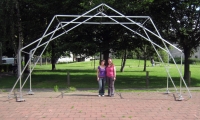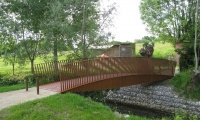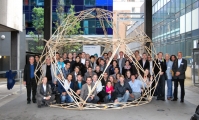Building activities and their daily use are very prominent in our current society. We are building structures and adapting them at the same speed to keep up with society's fast evolving requirements and needs. A more sustainable approach is essential if we want to reduce the large amount of waste produced in this industry. Reuse of material can increase if we start realising that a structure is better designed for a transition phase rather than for a particular end purpose.
For temporary, mobile and variable applications (e.g. exhibition pavilions, emergency shelters), deployable scissor systems can offer a solution since they are able to change their form and functionality. Deployable scissor structures are structural mechanisms that transform from a compact state (for storage or transport) to expanded states into a fully deployed configuration. However, a barrier to the realisation of scissor structures is a complex design process. It is essential to have a thorough understanding of the geometry and its direct relation to the deployment kinematics and structural performance.
To enhance the design of scissor systems, this work presents first a parametric assessment giving insight in the structural behaviour at the conceptual design stage. By doing so, guidelines for scissor structures are developed. This analysis leads to a second part where a new scissor concept is investigated and structurally optimised: the Universal Scissor Component (USC). This component offers an alternative for current scissor structures which are traditionally designed for a single purpose (i.e. shape, span and loading). The USC enables material reuse and mass production: the same component can be reconfigured in a variety of configurations and spans. The results in this thesis are a step towards better understanding and designing more efficient and competitive deployable scissor systems.




